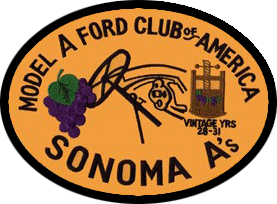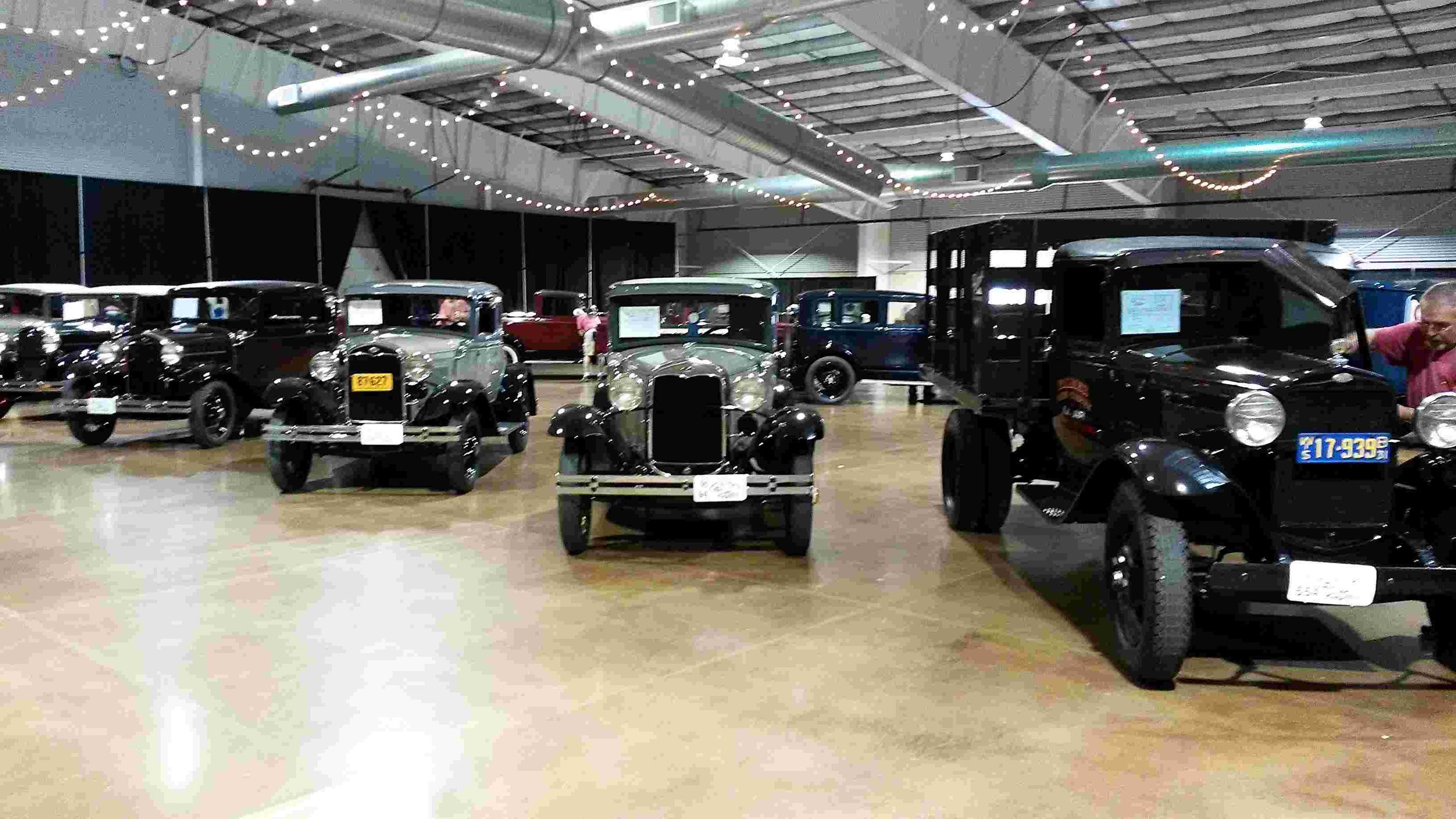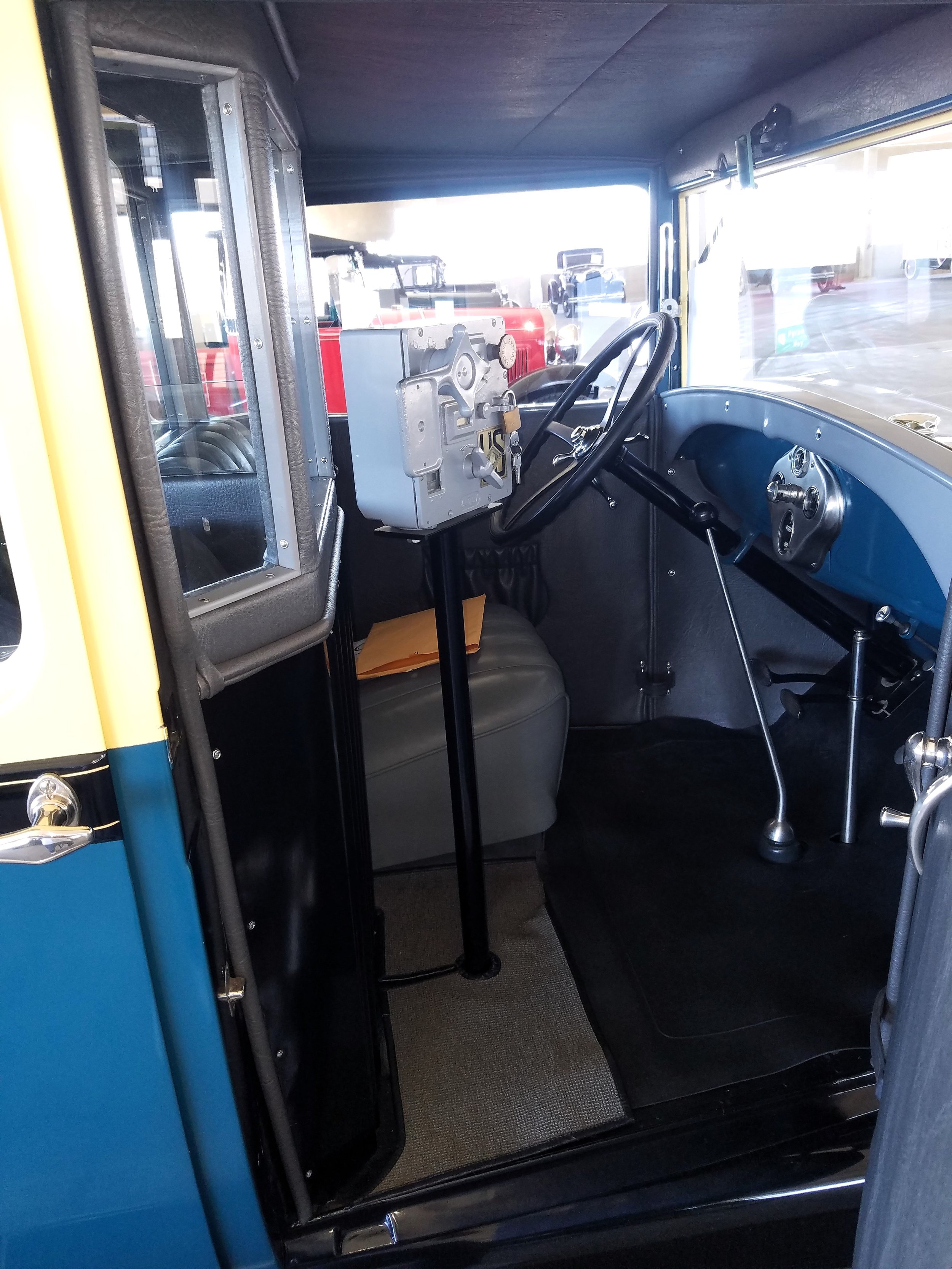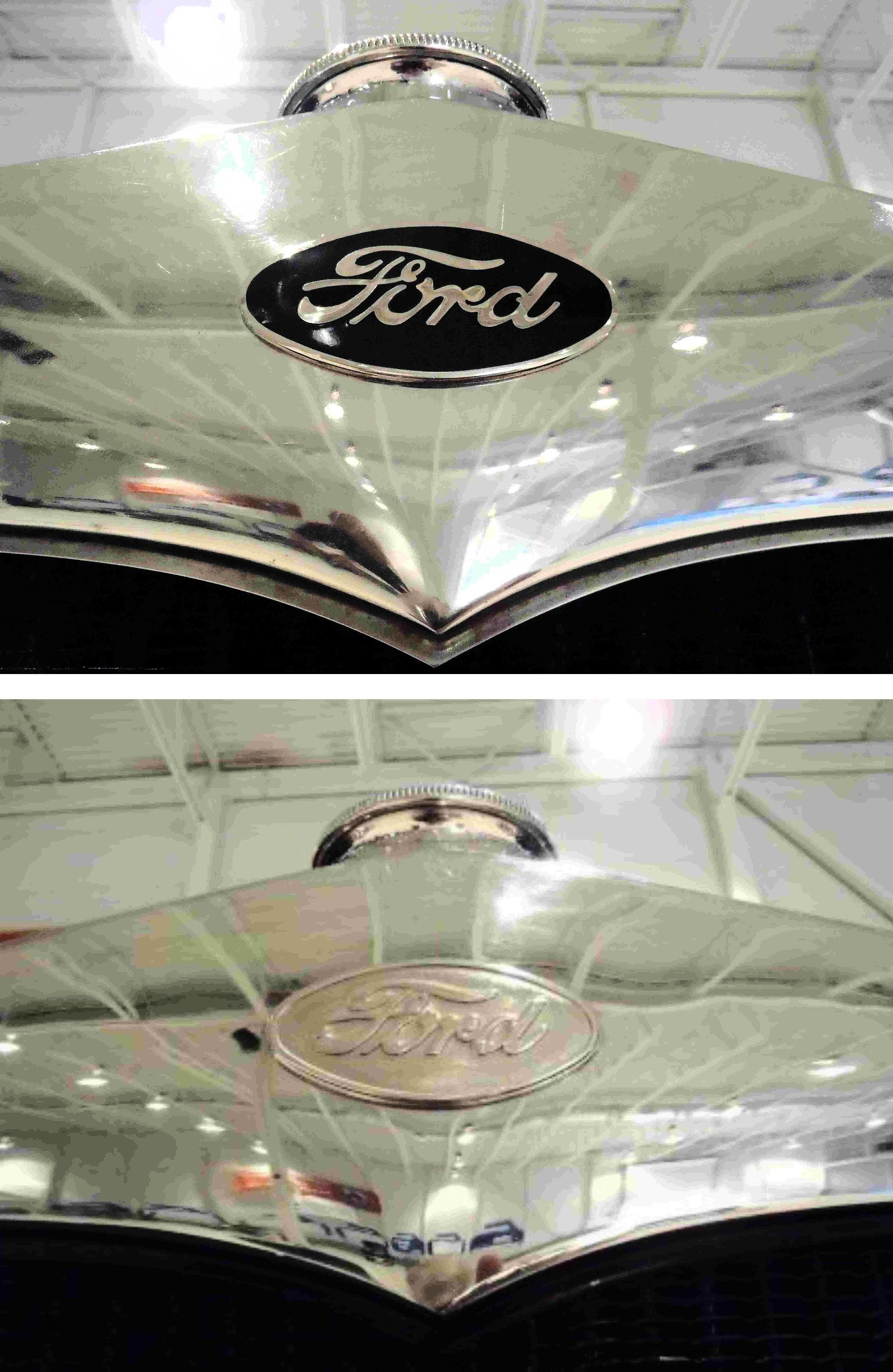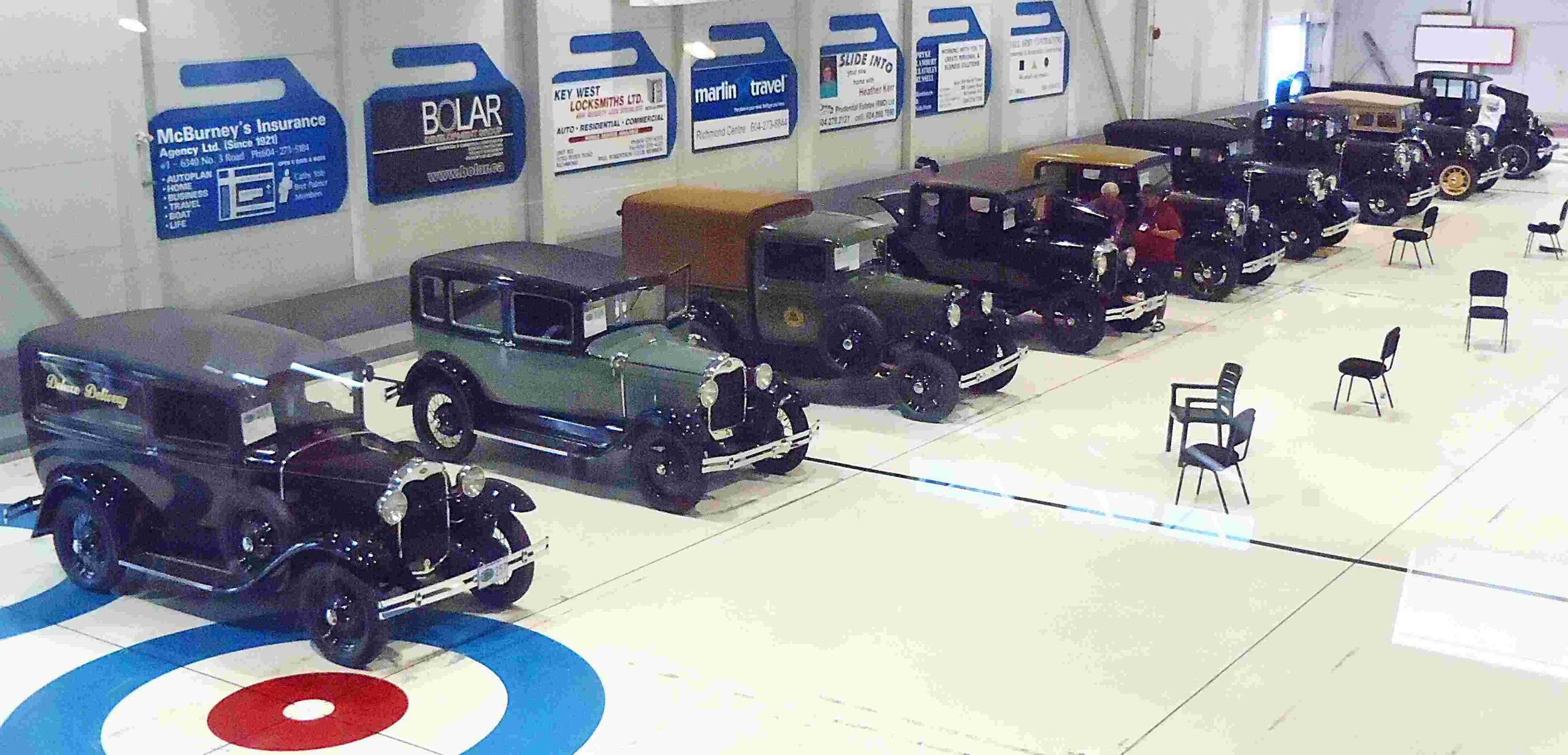MAFCA vehicle judging
Sanctioned vehicle judging is held at all national conventions and most regional events.
Unlike other forms of car shows, Model A judging is not a competition. Quoting from the Judging Standards (JS): “Judging is a process that measures each car against a uniform standard of authenticity and quality of restoration, not against other entries”. “The MARC-MAFCA standard for judging Model A is to compare each vehicle with how it would have appeared coming off the assembly line.” Additionally, each car is judged against information in the JS only, and not by an individual judge’s own ideas, knowledge or opinions.
Four categories are offered in what is commonly called Blue Ribbon or Fine Point Judging: Restored, Original, Touring, and Modified classes. Vehicles are judged using a points system of 500 (or 5000) points maximum. Teams of judges cover 23 separate areas, evaluating authenticity, condition, correct part/finish/assembly, etc. Every car starts out with full points, and points are deducted for discrepancies within each area.
The different classifications cover most As. Not all judged cars are high-point blue ribbon trailer queens. Most safety items are not penalized, and some performance enhancements, such as overdrives, are allowed in touring class.
To promote participation, a new Restorer’s Class was developed for the everyday driver. It offers a less scrutinized Evaluation with a maximum of 450 points.
If you are interested in having your car judged, take a look at the JS and see how your vehicle might attain a higher score with a few simple improvements. Then, ask a club member or members with judging experience to evaluate it. Sample score sheets will be available soon on MAFCA’s website to give you an idea of what the judges look for.
Judging Process
Judges are held to a high ethical standard and are expected to show respect for the cars and their owners. Judging teams keep comments out of earshot of bystanders and, in fact, owners are not permitted to be present during judging, except at Start and Idle, where the car’s operational ability is checked.
Car judges are formed into teams of three or four at meets, and often judge three or more areas of the cars, depending upon the number of cars entered for judging and the number of available judges. A Chief Judge runs the show and there is a Team Captain for each team.
The judges are classified based upon experience: apprentice, judge, senior judge, and master judge. Individual teams often have a master judge and an apprentice, so there is always much to be learned for a novice.
Become a MAFCA JUDGE
Car judging affords opportunities far beyond getting behind the ropes. Studying the areas in the JS gives one a keen appreciation of the subtle differences among the many models, and the running changes that were made during production to correct problems that arose in service, or to economize and improve as new manufacturing techniques were perfected.
The Sonoma A’s are fortunate to have several MAFCA-certified judges in our ranks who can help answer members’ questions about originality and correctness to your specific model year and body style.
Learn more about becoming a certified MAFCA judge or Restorers Class Evaluator on MAFCA’s website, or talk to one of our judges. The Judging Procedure Manual is available in the JS and online.
Images from judging events
As and AAs ready for judging in Colorado
Excellent example on an early Phaeton with unpolished body paint below the fender
Judging upholstery in Dallas
Those interested in becoming Judges may ask permission to 'shadow' or audit a team.
This very early rear bumper (note no end bolts) exhibits the correct unpolished finish on the edges and backside.
A rare Town Car, beautifully restored
Unique vehicles are frequently entered
Prior to assembly, this firewall was re-stamped after the indented firewall was introduced in May of 1931, moving the shut-off valve from the passenger compartment to the engine compartment. Ford never wasted anything
Very early Phaeton with correct red steering wheel
Senior Judge Steve Lewis seeing with his hands
Model A tool sets which came with the car are scrutinized for accuracy. Minor changes occurred throughout production, just like components on the cars
HIGHLY modified!
Model AA Service Body tow truck
Judges inspect David Jacoby's 1931 Deluxe Phaeton at the 2019 Santa Rosa NCRG
Bell Telephone service truck
U.S Mail truck
Bill Cilker and Dave Uhlig judging a tow truck in Vancouver Canada
Harold Parizek's unrestored Tudor being judged in Vallejo
A partial lineup in Loveland, Colorado
Upholstery judges discussing points
Some trucks could be ordered without cabs, so a custom cab could be added
Can't hide anything from these judges!
Air-conditioned indoor space isn't always an option, but on a warm day, judging undercarriage isn't so bad on cool grass, Just ask Dave Uhlig.
Sometimes Team Captains get privileges (like a stepladder to rest on)
Taxi Cab interior
Taxi judged in Reno
Radiator shell emblems on Canadian Model As were dark blue (almost black) until January 1929, then the color was eliminated.
Great day in Colorado for Truck lovers
Tools are judged for correct year, markings, finish, and condition, including the owner's manual
Some of the cars in Vancouver
An Original Class unrestored Coupe in Vancouver
Original, unrestored cars and trucks are always exciting to see
Model AA Express with canopy top
Harold Parizek's unrestored Roadster being judging in Vallejo
